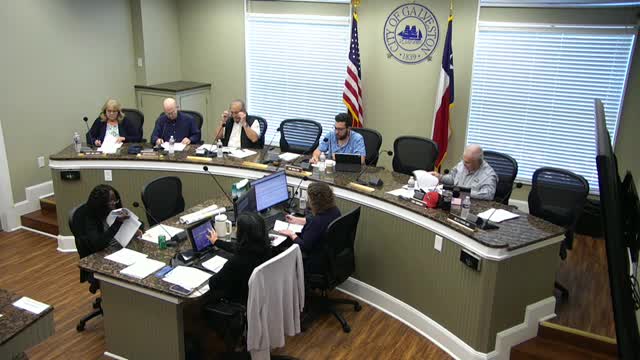Galveston planners hold public hearing on dune enhancement at 13241 Oceana Way; no action taken
November 04, 2025 | Galveston , Galveston County, Texas
This article was created by AI summarizing key points discussed. AI makes mistakes, so for full details and context, please refer to the video of the full meeting. Please report any errors so we can fix them. Report an error »

At its Nov. 4 meeting, the Galveston Planning Commission opened a public hearing and heard a staff report on a dune enhancement and associated mitigation for 13241 Oceana Way (case 25BFD-0661). Staff described the work as elevating an existing dune to roughly 12 feet using material reclaimed from subdivision road construction and other onsite sources.
The property sits in the Rosette subdivision, with single-family homes to the east, FM 3005 to the north and beach and dune system to the south. Staff cited a Bureau of Economic Geology erosion map that shows the area eroding at about 5 feet per year and presented surveys, cross sections and site photos. Staff said the applicant submitted sieve test results verifying the material to be reused and that the General Land Office (GLO) received the submittal for review.
Commissioners asked staff to confirm whether the GLO recommendation to harvest and relocate existing dune vegetation had been addressed. Kyle, Coastal Resources Division staff, said the GLO letter urged transplanting vegetation from the impact area, but staff and the applicant had weighed practicability. The city-required mitigation calls for 75% vegetative coverage after one year; staff said some parts of the area average about 50% and that staff was requiring the higher coverage benchmark. Kyle said the city has discretion under the Texas Administrative Code to require practicable mitigation and that the GLO must sign off on mitigation after the city concludes its monitoring.
Staff also described the project as a build-up of the dune rather than large-scale sand movement offshore and said monitoring and compliance inspections would continue after construction. No applicant representative appeared at the hearing, and no members of the public spoke about the case. The commission closed the public hearing and, because no formal application action was on the agenda for final approval, did not take further action at the meeting; the record will include the staff report and GLO comments for subsequent review.
Next steps described by staff included continued monitoring by the Coastal Resources Division and submittal of mitigation completion documentation to the General Land Office for final GLO sign-off.
The property sits in the Rosette subdivision, with single-family homes to the east, FM 3005 to the north and beach and dune system to the south. Staff cited a Bureau of Economic Geology erosion map that shows the area eroding at about 5 feet per year and presented surveys, cross sections and site photos. Staff said the applicant submitted sieve test results verifying the material to be reused and that the General Land Office (GLO) received the submittal for review.
Commissioners asked staff to confirm whether the GLO recommendation to harvest and relocate existing dune vegetation had been addressed. Kyle, Coastal Resources Division staff, said the GLO letter urged transplanting vegetation from the impact area, but staff and the applicant had weighed practicability. The city-required mitigation calls for 75% vegetative coverage after one year; staff said some parts of the area average about 50% and that staff was requiring the higher coverage benchmark. Kyle said the city has discretion under the Texas Administrative Code to require practicable mitigation and that the GLO must sign off on mitigation after the city concludes its monitoring.
Staff also described the project as a build-up of the dune rather than large-scale sand movement offshore and said monitoring and compliance inspections would continue after construction. No applicant representative appeared at the hearing, and no members of the public spoke about the case. The commission closed the public hearing and, because no formal application action was on the agenda for final approval, did not take further action at the meeting; the record will include the staff report and GLO comments for subsequent review.
Next steps described by staff included continued monitoring by the Coastal Resources Division and submittal of mitigation completion documentation to the General Land Office for final GLO sign-off.
View full meeting
This article is based on a recent meeting—watch the full video and explore the complete transcript for deeper insights into the discussion.
View full meeting
